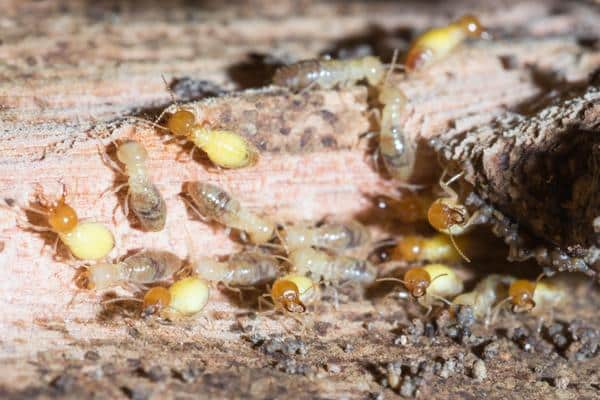How to Distinguish Carpenter Ants from Termites: Identifying the Menace in Your Home
Nothing can be more alarming than discovering unwelcome guests invading your home’s structural integrity. Two common culprits that can cause considerable damage to wooden structures are carpenter ants and termites. These pests can wreak havoc if left unnoticed and untreated. However, being able to differentiate between them is essential in determining the most effective treatment strategy. In this blog post, we will explore the key differences between carpenter ants and termites to help you identify the menace in your home and take appropriate action.
Physical Appearance
One of the primary ways to distinguish between carpenter ants and termites is by examining their physical characteristics. Carpenter ants are typically larger than termites, ranging from ⅛ to ½ inch in length, while termites are usually about ¼ inch long. Carpenter ants have a distinct waist with a segmented body, bent antennae, and front wings longer than their back wings. On the other hand, termites have a straight waist, straight antennae, and wings of equal length.
Behavior and Nesting Habits
Understanding the behavior and nesting habits of these pests can also aid in identification. Carpenter ants are excellent wood chewers and excavators, creating galleries and tunnels within wood to build their nests. They do not consume the wood; instead, they prefer sweet and protein-based foods. Look for sawdust-like debris called frass near their nesting areas.
In contrast, termites are voracious eaters and primarily feed on cellulose present in wood. They leave behind mud tubes, small holes in wood, or bubbling paint as signs of their presence. Termites build elaborate mud tunnels to maintain their access to food sources and moisture, helping them stay hidden and protected.
Swarmers
Both carpenter ants and termites produce winged swarmers during mating seasons to establish new colonies. However, their swarmers have distinct characteristics. Carpenter ant swarmers have dark-colored bodies with light-colored wings and are generally seen during spring. They emerge in smaller numbers compared to termites.
Termite swarmers, on the other hand, are pale in color and have two pairs of wings of equal length. They often swarm in larger numbers and are commonly spotted in the spring or early summer when they are seeking new nesting sites.
Frass vs. Droppings
As mentioned earlier, carpenter ants produce frass near their nests, which consists of chewed wood and insect waste. The frass is usually a mixture of tiny wood shavings and ant excrement and appears to be granular.
Termites, however, do not produce frass. Their droppings, called “termite pellets,” are small, oval-shaped, and often found in piles near their nest or infested areas. These pellets are usually a sign of drywood termite activity.
Time Frame for Damage
While both carpenter ants and termites can cause severe damage to wooden structures, their time frames for inflicting harm differ. Carpenter ants tend to create more noticeable damage over time, as their galleries and tunnels can be extensive. This means you might spot the damage before it reaches a critical stage.
Termites, on the other hand, work more discreetly and silently. They can cause significant structural damage before their presence is detected, making it crucial to stay vigilant and conduct regular inspections for early detection.
Distinguishing between carpenter ants and termites is vital in implementing the right pest control measures and preserving the structural integrity of your home. By examining their physical characteristics, behavior, nesting habits, swarmers, and signs of infestation, you can determine which pest is causing trouble and take prompt action.
If you are unsure about the identification or extent of the infestation, it’s always best to consult a professional pest control expert. Early detection and intervention can save you from expensive repairs and ensure a safe and pest-free home for you and your family. Remember, prevention is always better than a cure when it comes to dealing with pests like carpenter ants and termites.
Our reputation is what means the most to us.
We respect our customers and they love the results.
View More Reviews

